Thu Mar 03, 2022 13 Projections for 2022 (Part 3)
A collection of my own experiments
(see Intro for further explanations)
March: Canters-Frančula
| Canters-Frančula | |
|---|---|
| Original Creator | Nedjeljko Frančula / Frank Canters (1971 / 2002) |
| Group | Lenticular |
| Property | Compromise |
| Remarks | A fusion of Canters W09 (northern hemisphere) and Frančula XIII (southern hemisphere). |
| My variation | Developed in 2021, presented here for the first time |
This year’s calendar is about my experiments, and sometimes experiments go wrong.
Here is a projection that might not be complete failure, but it does have a certain imperfection.
It is a fusion of two existing projections, both are optimized variantes of Wagner IX.i: Frančula XIII[1] and Canters W09[2] (see also my blogposts about the Frančula and Canters projections). I like them both; but it occurred to me that the distribution of angular deformations on the landmasses of the southern hemisphere is a bit better – and in contrast, the Canters W09 shows a few advantages on the northern hemisphere.
Regarding the distribution but areal inflations on the continents the two are not much different, although I do see slight advantages on the Frančula.
So I thought: Take the best of both worlds (pun intended), paste the northern hemisphere of Canters W09 and the southern hemisphere of Frančula XIII together! For both, a little adjustment of the aspect ratio was needed to make them fit together at the equator: The Frančula was a bit compressed in east-west-direction, the Canters a bit stretched. The result is shown above.
But although I like this composition visually, I have to admit that it is not without flaw. Look at the isolines of angular deformations and areal distortions:
The isolines are given for max. angular deformation of:
10°, 20°, 30°, 40°, 50°, and 60°.
For the areal inflation, shown normalized to the value at the central point of the map,
the lines represent values of:
1.2; 1.5; 2.0; 2.5; 3.0; and 3.5.
You can see that the lines are broken – there are discontinuities in the distribution of distortions at the equator. Such discontinuities are not unprecedented, in fact they occur in various fused projections: To name just a few, McBryde S3, Goode’s famous Homolosine and the wonderful Philbrick Sinu-Mollweide … all of them are fusions[3], and they all show discontinuities in the distortions.
My first idea was that the Canters-Frančula might be a nice addition to the calendar,
but, because of the discontinuities, not good enough to add it to the list
on my website … but then I thought that if such well-known, beautiful projections
are “allowed” to have them, than I can allow them, too, on my own experiments.
And thus, the Canters-Frančula projection will be added soon.
We’re done.
Next month, we’ll have… ummmm… April.
References / Footnotes
- ↑ Nedjeljko Frančula: Die vorteilhaftesten Abbildungen in der Atlaskartographie (German)
-
↑
Frank Canters:
Small-scale Map Projection Design.
London & New York 2002. - ↑ McBryde S3 is a fusion of the sinusoidal projection and McBryde-Thomas Flat-Polar Sinusoidal, joined at 55°51′N/S; Goode’s Homolosine fuses sinusoidal and Mollweide at 40°44′N/S; Sinu-Mollweide also combines the latter two, but at 40°44′S (before rotating the map center).
My 2022 Map Projection Calendar
To read another part of my 2022 map projection calendar series, select the desired month.


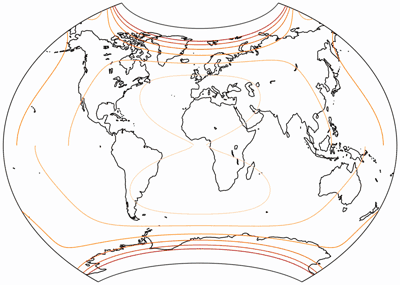
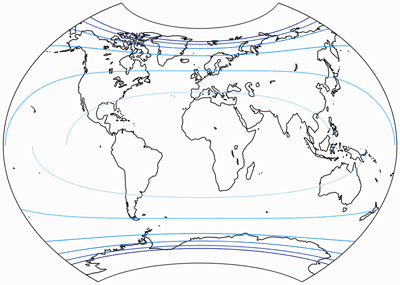


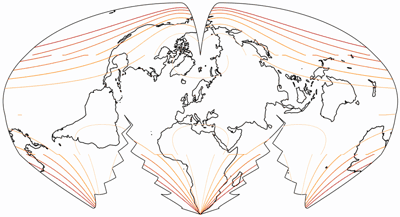








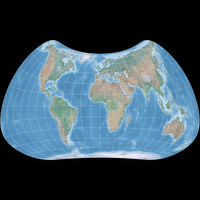



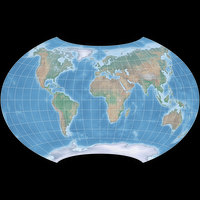
 Except where otherwise noted, images on this site are licensed under
Except where otherwise noted, images on this site are licensed under
Comments
Be the first one to write a comment!